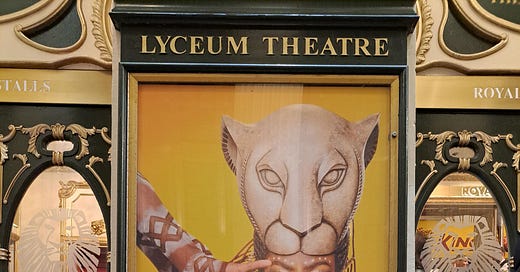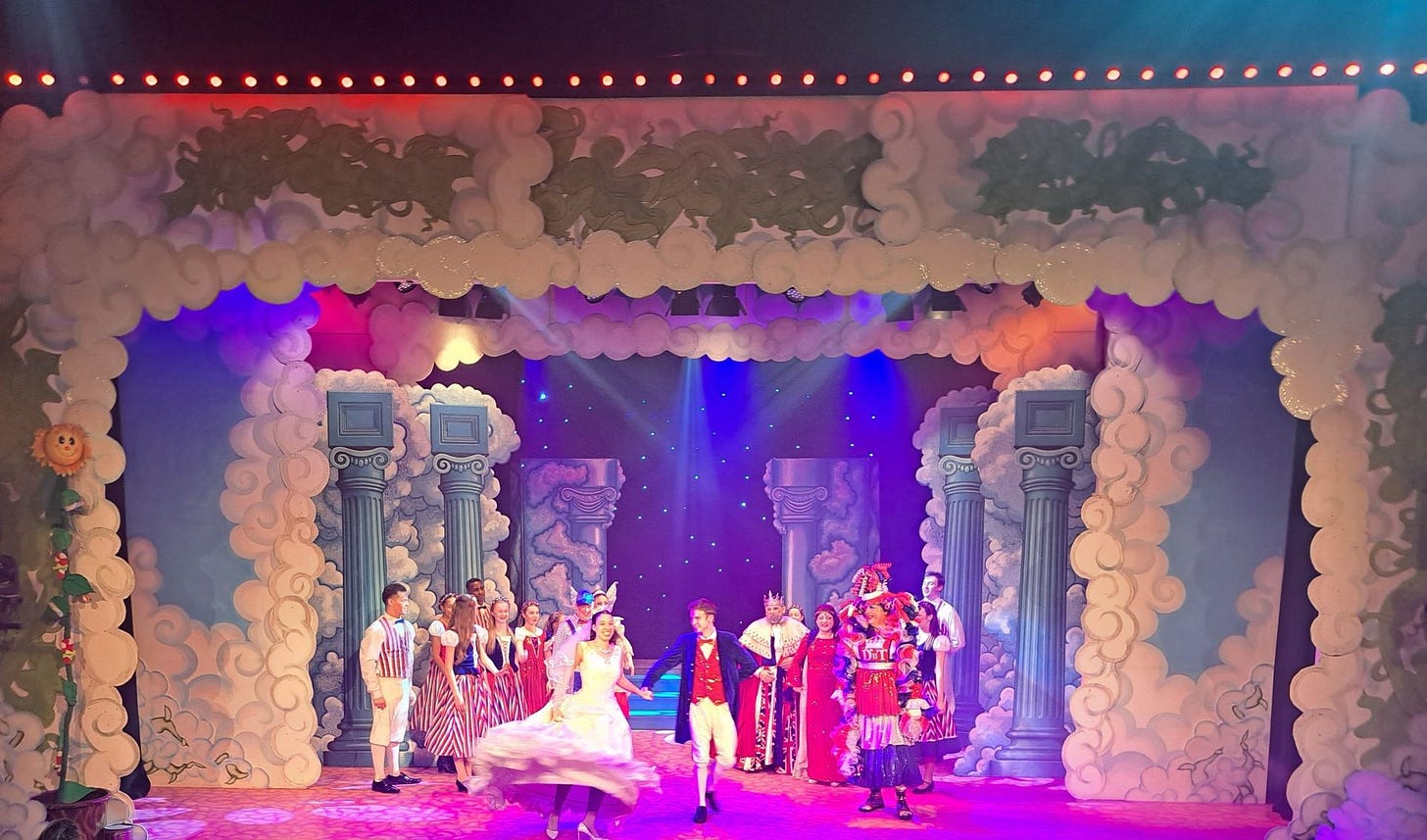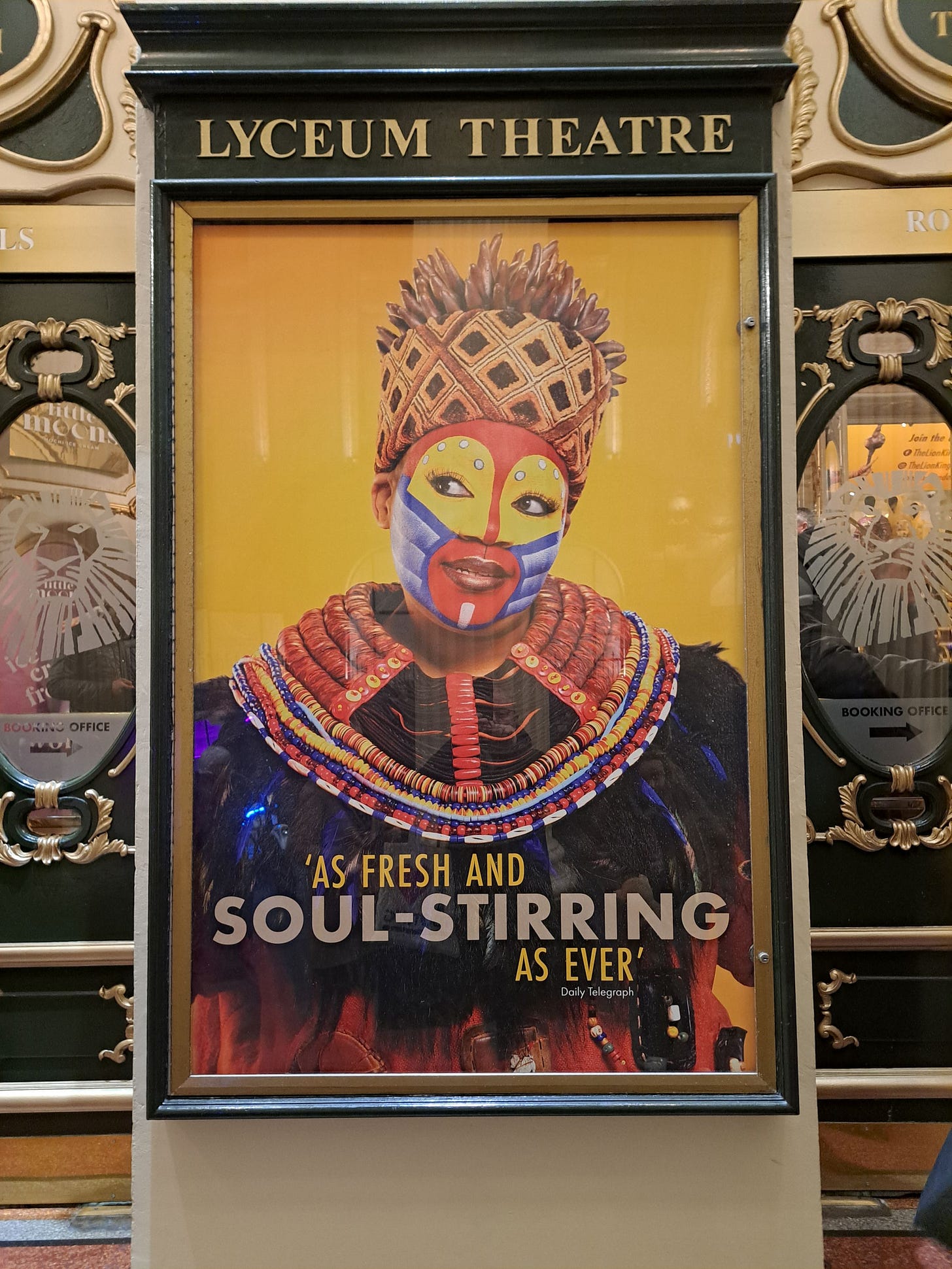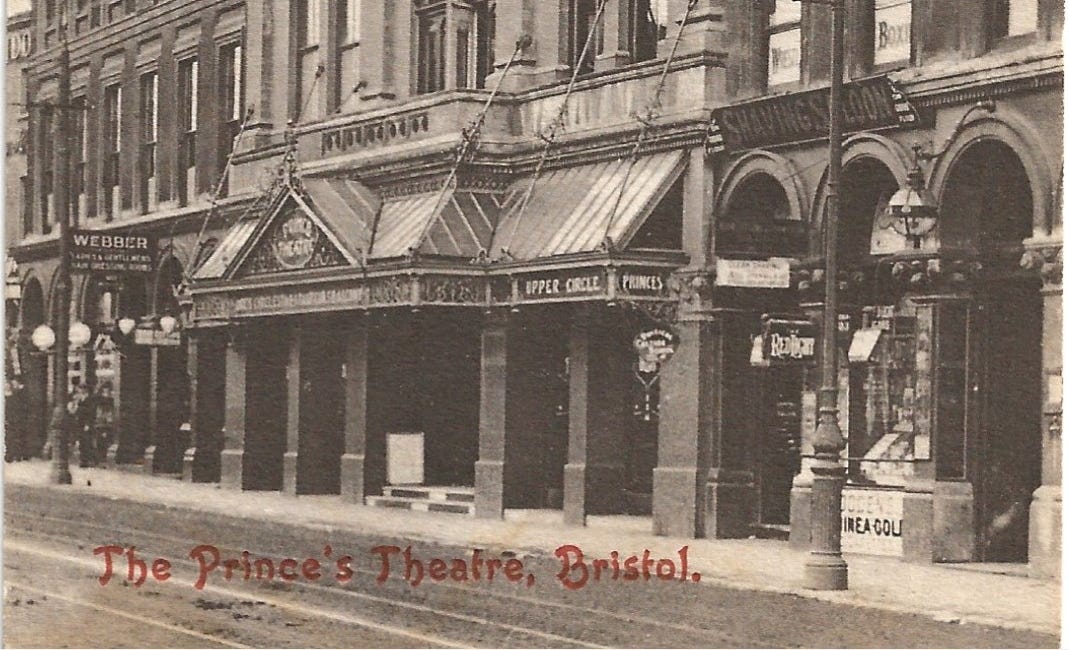How do you explain pantomime to someone who has never heard of it? I discovered how difficult it is when my hairdresser, who is Italian, and I were chatting about how we’d spent our Christmas and New Year. It’s a very British tradition, I said. There’s a pantomime dame who is a man dressed as a woman. Hairdresser snipped and looked nonplussed. You have to shout “behind you” and “oh no it isn’t”, I said. Hairdresser sprayed product and looked doubtful. And you sing along with the songs, I added. Hairdresser blew hair clippings everywhere with the dryer and looked baffled. Well, I added hopefully, it has its roots in commedia del arte. Hairdresser dropped his hairbrush. Finally, I said, maybe you have to be there. He didn’t look as if he thought he’d be going any time soon.
It’s a pity if I didn’t manage to explain that the point of pantomime is to have fun! I certainly did have fun at the panto on the first Saturday in January. I went to see Jack and the Beanstalk at Bristol’s Redgrave Theatre in a production by Polka Dot Pantomimes. In a recent post I wrote a little about the history of pantomime and how the modern pantomime has evolved from the harlequinades and pantomimes of three hundred years ago (link to post below). The programme for the Polka Dot production (“The pantomime you’ve all Bean waiting for”) includes some background to the story of Jack and the Beanstalk, suggesting that the first pantomime version of it was performed at Drury Lane Theatre, London in 1918.
I was interested to find out more about this production, but I couldn’t find any listing for a Drury Lane Jack and the Beanstalk in 1918. However, I did find reports of earlier productions at this theatre, including one in 1900 written by Arthur Sturgess and Arthur Collins (with Dan Leno). Drury Lane produced another version in 1910 written by J Hickory Wood, Frank Dix and and Arthur Collins. But even before these, Charles Dibdin wrote a Christmas pantomime Jack and the Beanstalk for Drury Lane in 1819.
I can’t find a copy of Dibdin’s play, but I suspect it would have been quite different from the pantomime as we know it today. For all that, modern-day panto is full of tradition, and tradition is what we got from Polka Dot. There wasn’t a “behind you” and “oh no it isn’t” left out, and I don’t think I’ve ever known such a word-perfect audience! It was very funny, full of energy, with a splendid villain (Amanda Board Salmon’s Poison Ivy), a marvellous dame (Vince Williams as Tilly Trott), and a charmingly earnest Jack (Robbie White). But really it’s a shame to pick anyone out of such a lovely ensemble and I thank them all for a very entertaining afternoon.
Four days later we were in the Lyceum in London for The Lion King. The Redgrave is a small theatre with a capacity of around 300, and it’s a very different experience from London’s Lyceum which seats around 2,000. The Lyceum is a Grade II listed building with an opulent interior, which was at risk of being demolished just before the Second World War, along with four other theatres, to make way for a road. (What kind of world do we live in?) Anyway, that didn’t happen, it had millions spent on it for a refurbishment in the 1990s and now it’s home to The Lion King, a big theatre for a big production.
I’d never previously had any yearning to see The Lion King, or any big West End musical if it comes to it. I first became interested in the show when I saw The Guardian’s “behind the scenes” photo gallery on 24 October 2024. I was fascinated by the pictures of the sets, make-up, masks, costumes, and above all the puppets – the show uses rod, mask and full size puppets. I had to see them in action!
I get the impression from some of the reviews and comments I’ve looked at that most people who go to see the musical have seen the film(s), either the original 1994 version or the 2019 remake. I have never seen either film, I don’t know any of the songs, and I didn’t even know the story. Well, it’s not a very complicated tale, most of the Western-style songs are fairly straightforward, and none of the characters are very complex. But the puppets are incredible, the choreography stunning, the costumes and masks brilliant, the sets are well designed, and the music by South African composer Lebo M is amazing. The use of the theatre space is very effective, with cast members entering from the auditorium, and singing as well as playing percussion from the boxes. The openings to Acts 1 and 2 are dazzling spectacles.
In fact, if I’m honest, you could take out the characters, the sing-along tunes (Michael Billington in The Guardian, 4 January 2011 called them bland), and most of the dialogue (“Disneyed verbal banality” – Billington in The Guardian again, 21 October 1999), and just give me the puppets, masks, dancing and African music. In the end, what I appreciated was the production itself: the design, the choreography, the music, the sheer theatricality of it.
Actually, I don’t think Billington was being quite fair. After all, The Lion King is Disney, and so you must expect it to be Disneyed and to have child-appeal, Disney style. What surprised me is that there’s so much genuine artistry and energy in it, and I’m not sure that that’s what would actually appeal to children. Depends on the child, I suppose. Anyway they appealed to me, and for that reason I thoroughly enjoyed the production.
The Volcano, or the Rival Harlequins: A Dan Foster Mystery:
Last week I published a short story for Christmas: The Volcano, or the Rival Harlequins: A Dan Foster Mystery. It’s December 1799 and the Theatre Royal, Covent Garden is presenting its Christmas pantomime. Dan Foster, Principal Officer of Bow Street, is assigned to the theatre to help keep order. What begins as a tedious assignment turns into a murder i…







